Shade Perennials to Plant With Spring Bulbs
Looking for some plants that will grow in the shade and help to hide bulb foliage? This list of shade perennials to plant with spring bulbs is perfect!
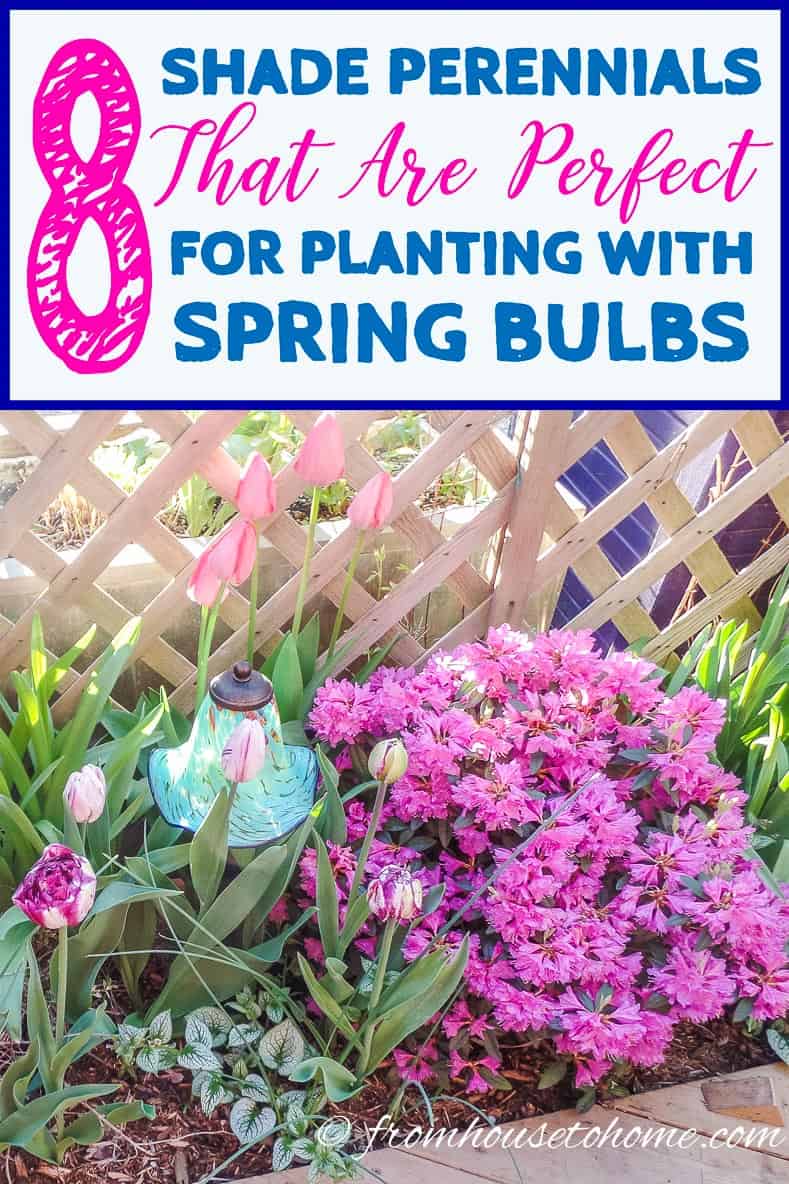
Last fall I planned for a riot of spring bloom in the flower beds around my new deck by planting a myriad of spring flowering bulbs like tulips, iris reticulata, daffodils, and alliums in shades of blue, purple, purple-black, pink and white.
Because of the bushes that are planted around the deck, there is limited sunlight in that area after their leaves come out.
Since most spring flowering bulbs need full sun, I chose (with the exception of the alliums) to plant early to mid-season blooming varieties that will be finished blooming before they become engulfed by shade.
Then I needed to find some companion plants for the spring bulbs that will fill in the spaces and camouflage the bulbs' foliage after their blooms are spent. And they needed to flourish in the shade under those bushes.
Keep reading to find some of my reliable familiar choices, as well as a few new introductions that I tried for the first time. (I am a plant lover and am always trying new cultivars!)
Hint: If you buy small plants, you'll be able to fit them between the bulbs without disturbing them.
Hellebore
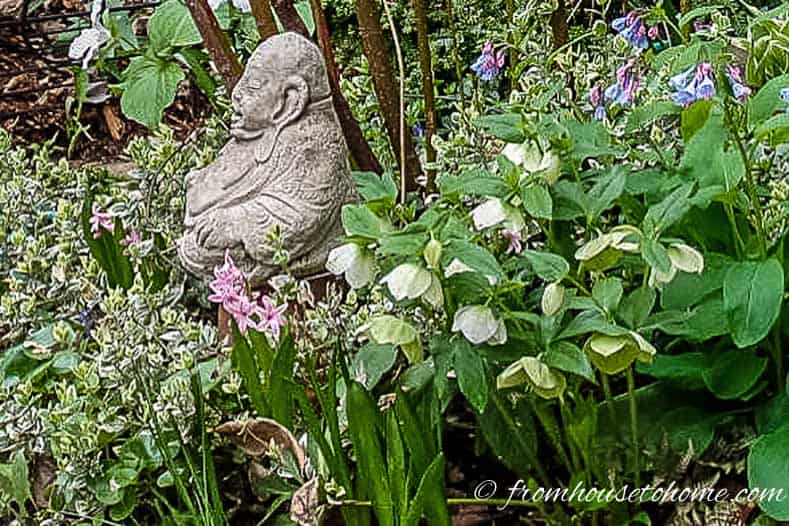
Anyone who has read our gardening posts knows that the Hellebores (also called Lenten rose) is one of our favorites.
It is an evergreen compact low growing, minimal maintenance perennial.
Its early spring blossoms last for 2 to 3 months and overlap with a lot of the early spring bulbs (like the Hyacinths above).
Two cultivars have caught my attention — ‘Dark and Handsome‘ and ‘True Love‘.
‘Dark and Handsome' (find it HERE*) is a stunning specimen with big 2½- to 3-inch purple/black double blossoms.
‘True Love' (find it HERE*) is also a double, prolific bloomer in a glorious sparkling maroon shade.
Both are from the celebrated ‘Wedding Party' series and thrive in the shade.
Hosta
![Alliums at the Chelsea Garden Show: By Karen Roe [CC BY 2.0], via Wikimedia Commons](https://www.gardenersoasis.com/wp-content/uploads/sites/12/2017/01/4.jpg)
Hostas make great companions to bulbs of all kinds.
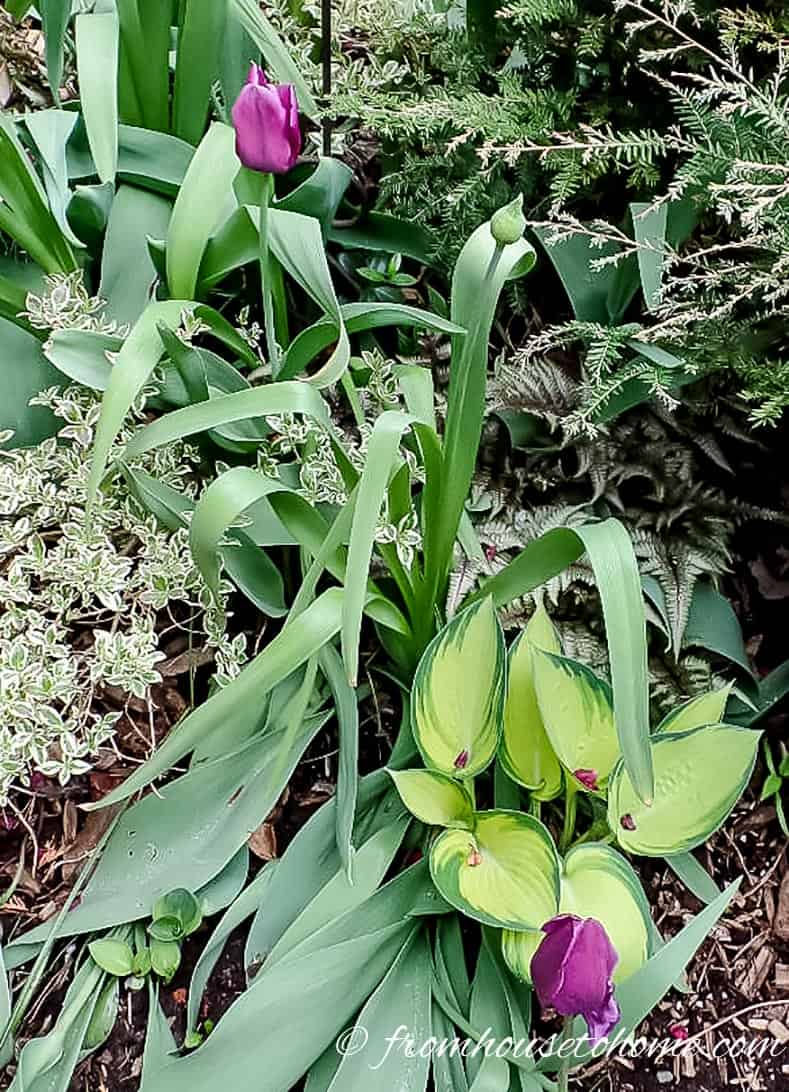
They start growing right around the time the bulbs are blooming, and their large, rounded leaves contrast with the longer, leaner bulb leaves.
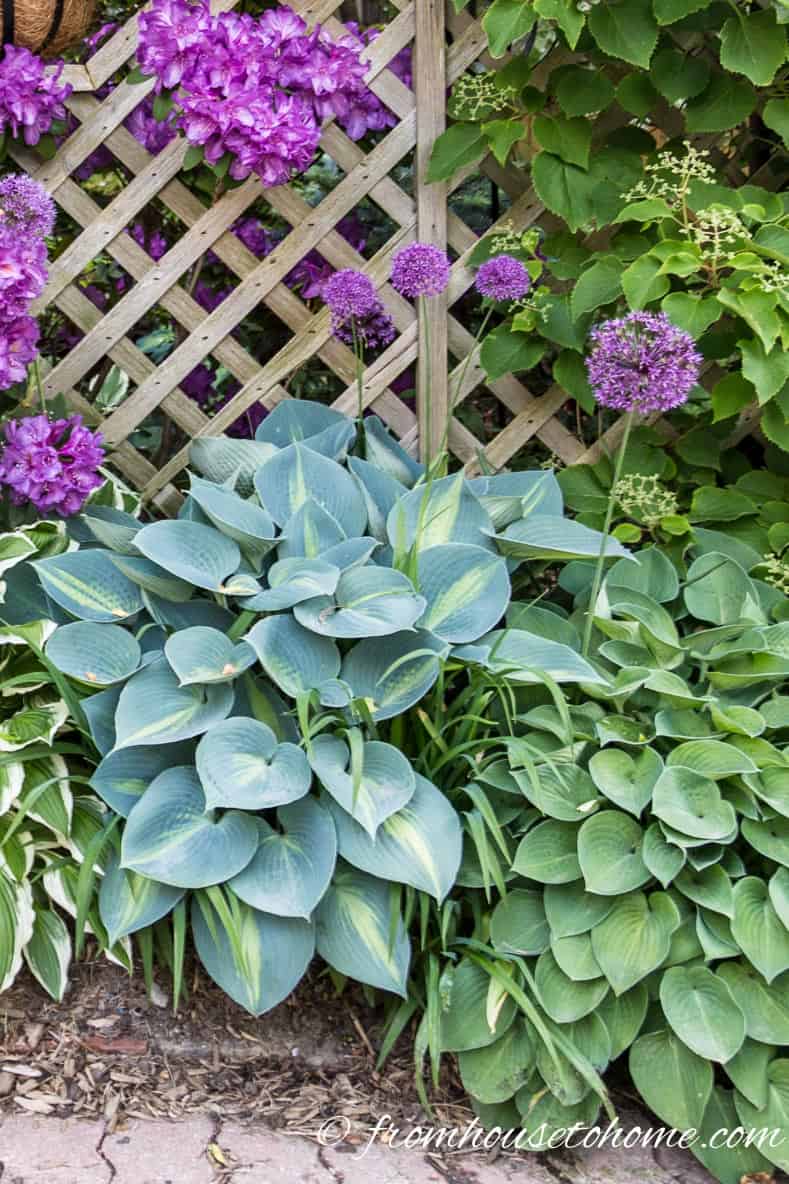
By the time the bulbs are done blooming, the hostas are big enough to hide the bulb leaves. Once I cut off these alium flower stalks, you don't even be able to tell that it was there.
This year I'll be looking for ‘Dorothy Benedict' (a little difficult to find online) and ‘June' (which you can find HERE*).
This is a popular breeding plant with blue leaves that have yellow veining and mauve flowers in August.
Japanese Painted Fern

Japanese ferns have such pretty colors that even though they don't bloom, they are sure to light up a shady spot in your garden.
Bulbs have no problems growing up through them, and the fern leaves create a distraction for the bulb plants after the flowers are finished.

My 2 favorite varieties are ‘Pictum' and ‘Ghost'
‘Pictum' (find it HERE*) has bluish fronds with burgundy stems and silvery white tips.
It tends to come in an array of subtle color variations so choose the one that appeals to you.
I also like to plant Athyrium ‘Ghost' (find it HERE*) for its silvery white upright form that stands out in the shade.
Japanese painted ferns do not like to dry out even in winter, otherwise they are very low maintenance stunning plants.
Brunnera Macrophylla
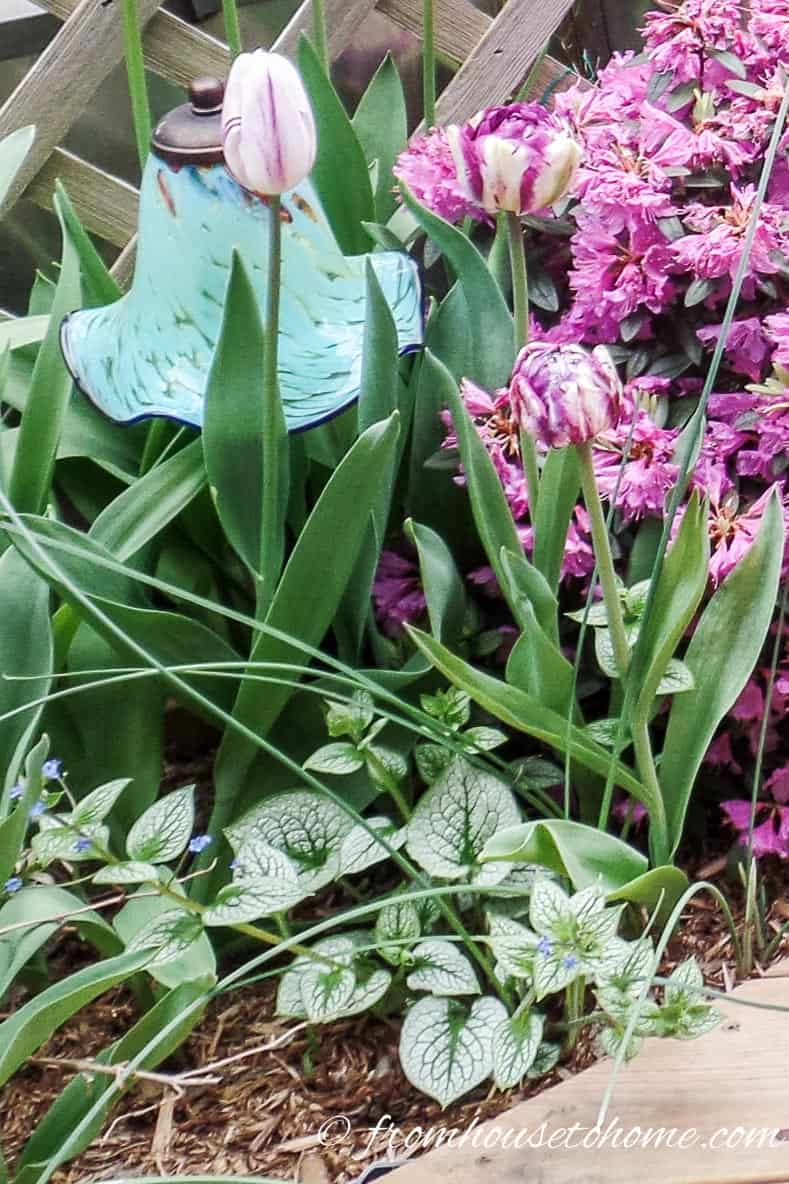
You cannot beat the ‘Jack Frost' variety of Siberian Bugloss (you can find it HERE*) as a companion to Spring bulbs.
Its heart-shaped silver leaves and dainty forget-me-not blue May blossoms are lovely amid tulips and daffodils–looks like blue baby's breath in a bouquet.
An eye catching low maintenance shade lover that requires dividing every 3 years.
It was awarded Perennial of the Year in 2012.
Rhododendrons and Azaleas
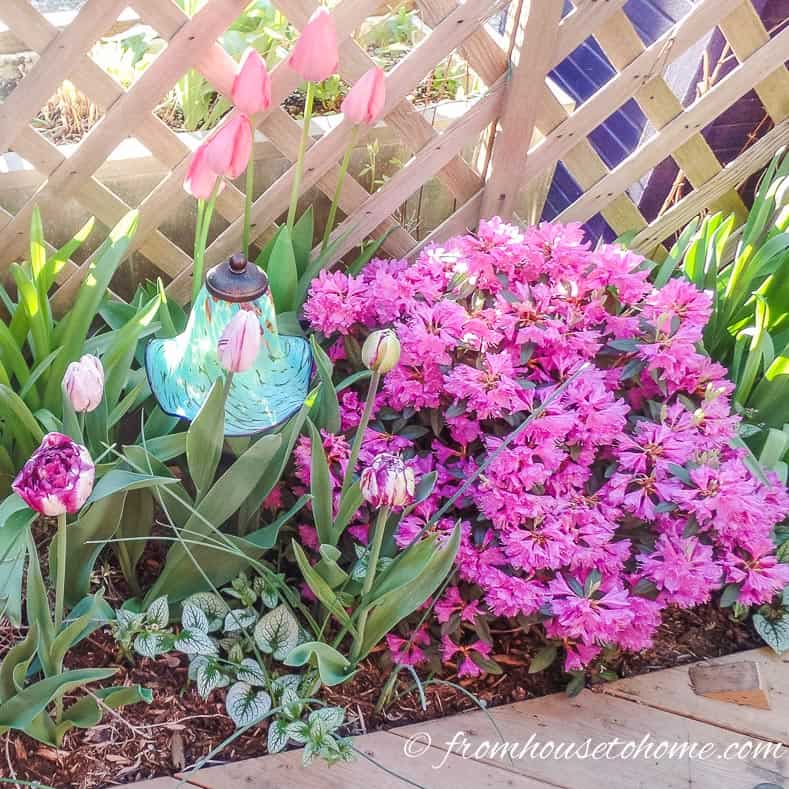
Smaller Rhododendrons and Azaleas (like this PJM Rhododendron) work really well with spring bulbs.
They bloom around the same time creating a beautiful backdrop for the bulbs.
And after they have finished blooming, the evergreen leaves of the bushes help to cover the dying tulip leaves.
Drifts of Bulbs
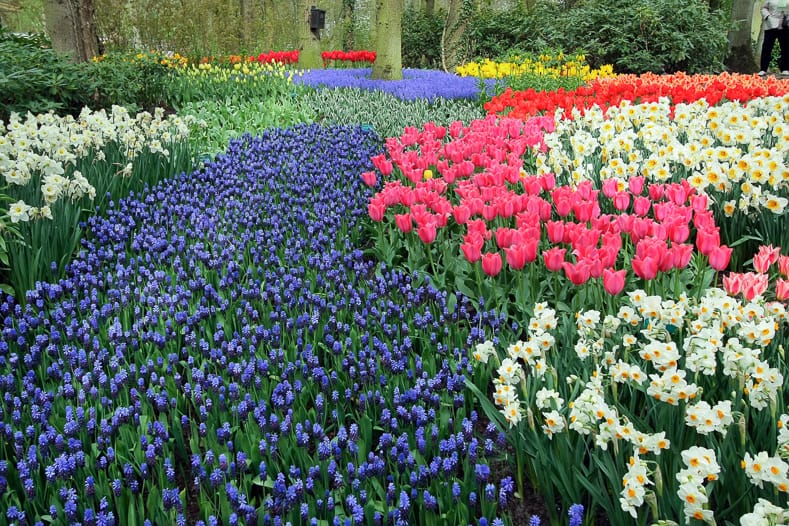
If you don't mind having the bulb foliage left after the blooms are finished, planting drifts of bulbs with other bulbs can really make a statement.
Keukenkof Garden in the Netherlands does this on a grand scale, combining muscari with tulips and daffodils in the picture above.

As well as using bands of hyacinths to line sidewalks in the picture below.
Making this kind of a mass planting would definitely take a little work. But the effect is stunning!
Low Growing Evergreens
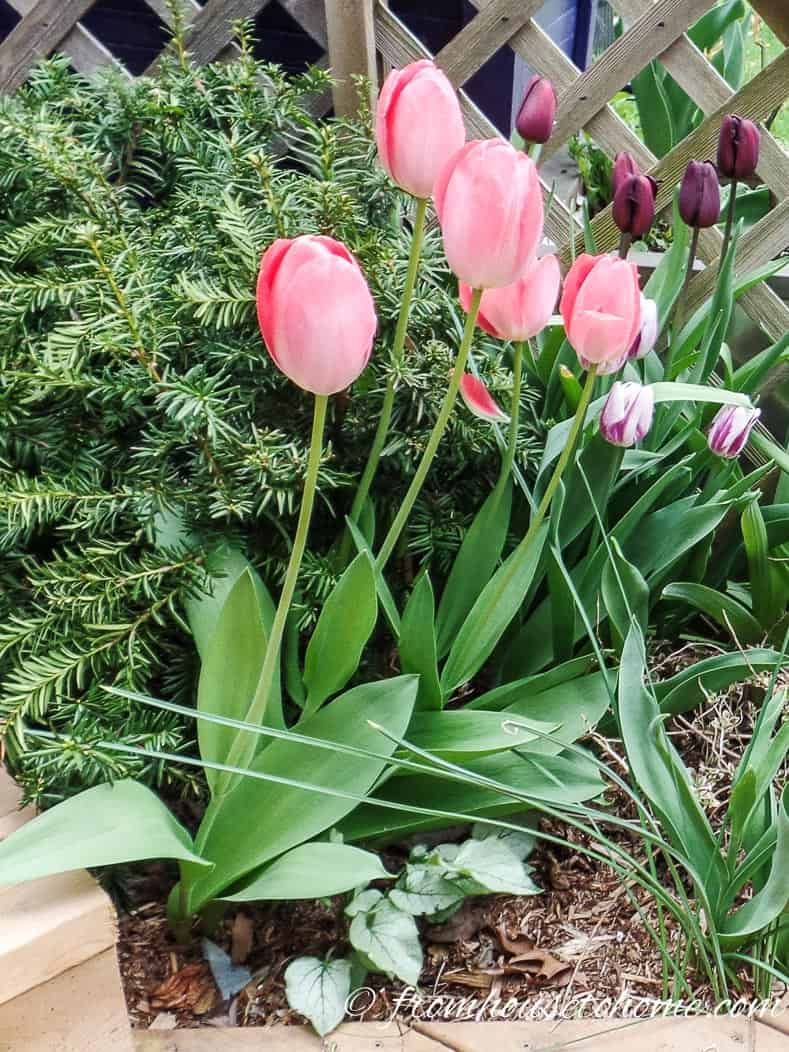
Low growing evergreens like Hemlock are great plants to mix with bulbs.
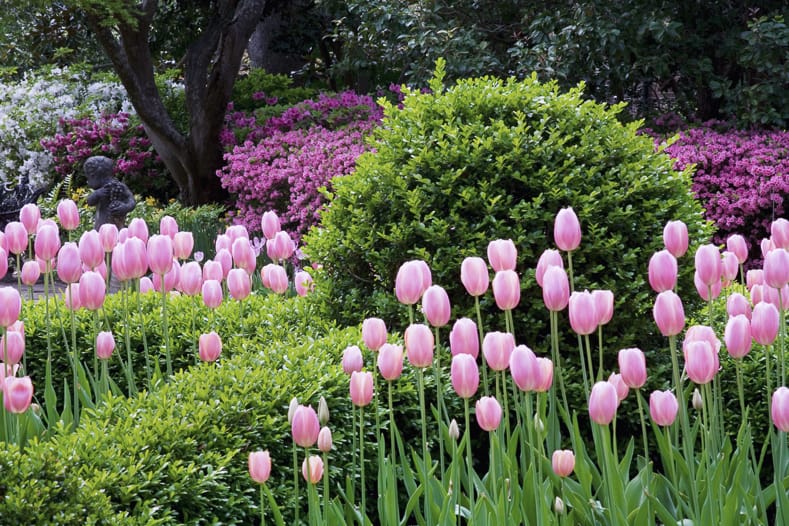
The evergreen branches allow the flowers to grow through, but help to camouflage the leaves after the blooms have finished.
Tsuga canadensis ‘Gentsch White' (found HERE) is a small silvery tipped hemlock that will provide winter interest in the border and make a nice contrasting anchor for the blooming bulbs and perennials.
Variegated Daphne
While there are many kinds of daphne that would look good with spring bulbs, I love the variegated varieties, like the one above (found HERE) and a new introduction from Monrovia nurseries called ‘Moonlight Parfait'.
Daphne grows in USA Zones 7-9 which sadly, is not the right zone for my Toronto garden (but grows very well in Wanda's South Carolina garden).
At maturity, it reaches about 4 feet high, has evergreen leaves and makes a gorgeous vignette with tulips and alliums in the forefront.
It also should be situated near a shady path so that you can appreciate its sweetly fragrant white flowers.
Other Shade Gardening Ideas You Might Like
- Shade Loving Shrubs: 11 Beautiful Bushes To Plant Under Trees
- 15 Stunning Perennial Ground Cover Plants That Thrive in the Shade
- 9 of the Best Flowering Vines For Shade
- 10 Purple and Blue Part Shade Perennials To Plant With Spring Bulbs
Have comments or questions on shade perennials to plant with spring bulbs? Tell us in the section below.
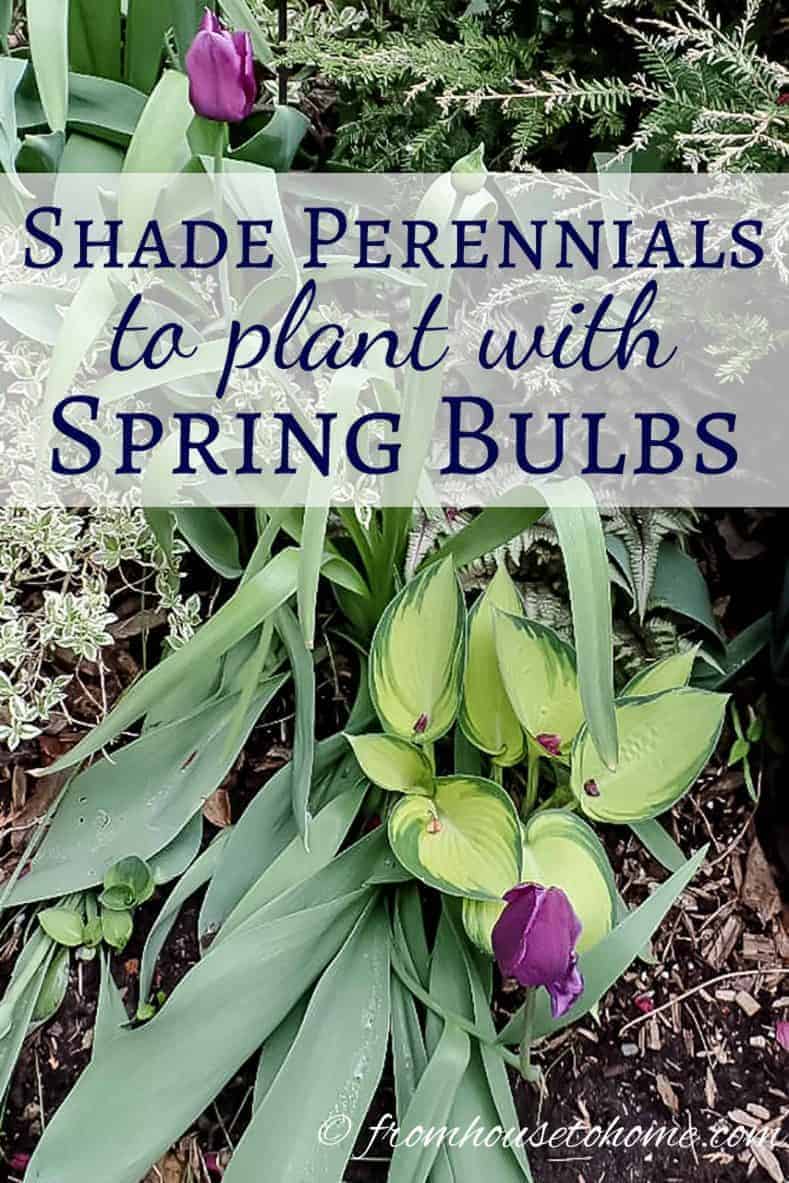
This post was originally published on October 23, 2017 but was updated with new content on November 23, 2024.






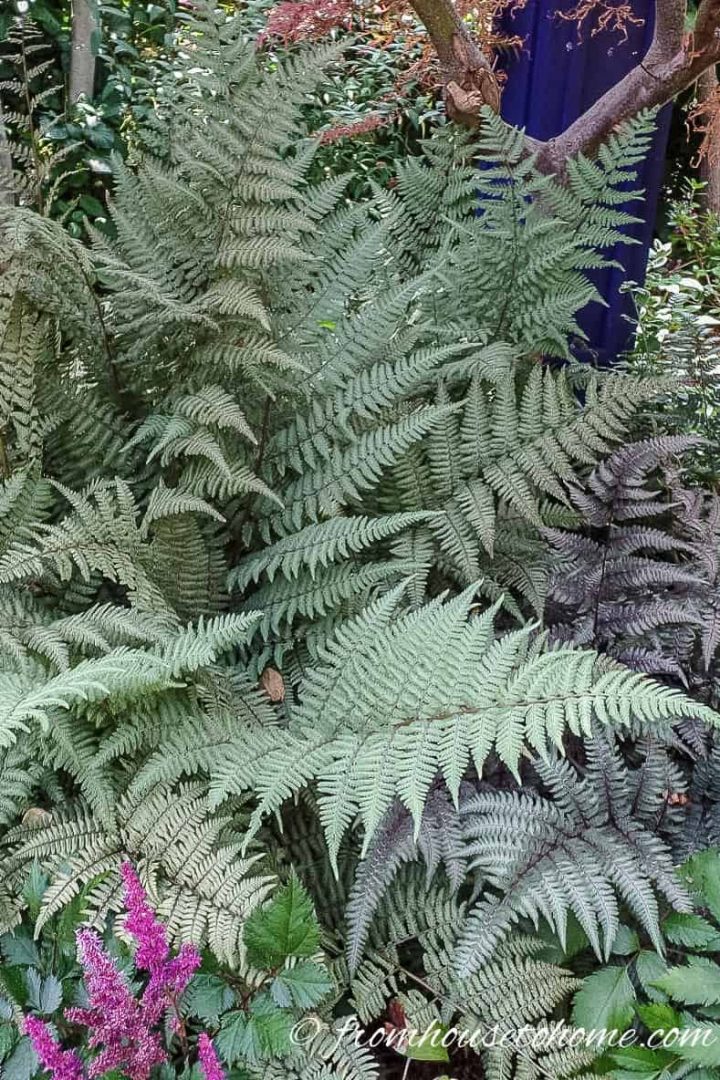

















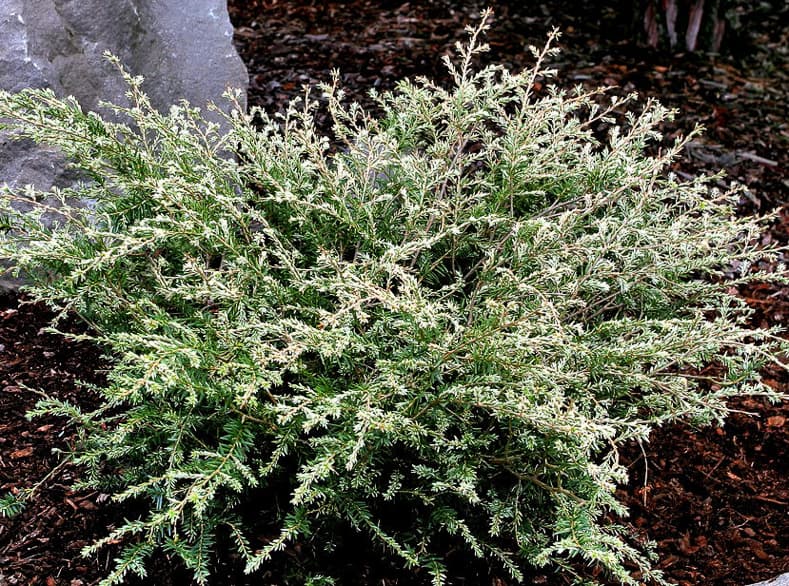

excuse me, but it is spelled hellEbore
Thanks, Ida…you are right! Not sure how I missed that one 🙂
Fabulous plants that love shade. Thank you fr this post, because I am often looking for beautiful shade loving plants. Thanks to you I know of some.
Hi Ivory…I have a lot of shade in my garden, so I’m always looking for shade loving plats, too 🙂 I’ll be updating the list as I find more.
I need plants that have full shade till noon, then full sun the rest of the day. What can I plant?
Hello Clara, If you have 6 or more hours of full sun a day, you can grow any plant that requires sun/part sun — just check the plant tags at your nursery. There will be loads of selections so you can choose the ones that appeal to you the most.